
Chumphon: Gateway to Thailand's Marine Wonders
Discover Chumphon, Thailand's hidden gem, offering pristine beaches, vibrant coral reefs, and lush national parks, perfect for both adventure seekers and relaxation lovers.
Chumphon, located on the narrow Kra Isthmus, is often described as the gateway to the southern islands of Thailand. This coastal city is surrounded by pristine beaches, crystal clear waters, and lush national parks. While often overlooked by tourists, Chumphon offers a tranquil escape from the bustling tourist hubs, making it a perfect destination for those seeking both adventure and relaxation. The city itself is a blend of traditional Thai culture and modern conveniences. Wandering through the streets, you will find bustling markets, charming local eateries, and friendly locals eager to share their culture. Chumphon is also famous for its delicious seafood, fresh from the Gulf of Thailand, which you can enjoy in many seaside restaurants. One of Chumphon's main attractions is its proximity to the Chumphon Archipelago, a group of islands perfect for diving and snorkeling. The underwater world here is teeming with vibrant coral reefs and diverse marine life. For those who prefer staying on land, the Mu Ko Chumphon National Park offers stunning coastal views, hiking trails, and opportunities for bird watching. Whether you are diving into the depths of the sea or exploring the lush greenery, Chumphon promises an unforgettable experience.
Local tips in Chumphon
- Visit the local markets early in the morning for the freshest produce and authentic Thai breakfast.
- Consider staying in a beachside bungalow for a more immersive and relaxing experience.
- Rent a scooter to explore the surrounding areas at your own pace.
- Don't miss the sunset views from Thung Wua Laen Beach.
- For diving enthusiasts, book your diving trips in advance to secure a spot.
Chumphon: Gateway to Thailand's Marine Wonders
Chumphon, located on the narrow Kra Isthmus, is often described as the gateway to the southern islands of Thailand. This coastal city is surrounded by pristine beaches, crystal clear waters, and lush national parks. While often overlooked by tourists, Chumphon offers a tranquil escape from the bustling tourist hubs, making it a perfect destination for those seeking both adventure and relaxation. The city itself is a blend of traditional Thai culture and modern conveniences. Wandering through the streets, you will find bustling markets, charming local eateries, and friendly locals eager to share their culture. Chumphon is also famous for its delicious seafood, fresh from the Gulf of Thailand, which you can enjoy in many seaside restaurants. One of Chumphon's main attractions is its proximity to the Chumphon Archipelago, a group of islands perfect for diving and snorkeling. The underwater world here is teeming with vibrant coral reefs and diverse marine life. For those who prefer staying on land, the Mu Ko Chumphon National Park offers stunning coastal views, hiking trails, and opportunities for bird watching. Whether you are diving into the depths of the sea or exploring the lush greenery, Chumphon promises an unforgettable experience.
When is the best time to go to Chumphon?
Iconic landmarks you can’t miss
Krom Luang Chumphon Khet Udomsak Shrine
Explore the tranquil Krom Luang Chumphon Khet Udomsak Shrine, a serene monument by the sea, rich in history and cultural significance.
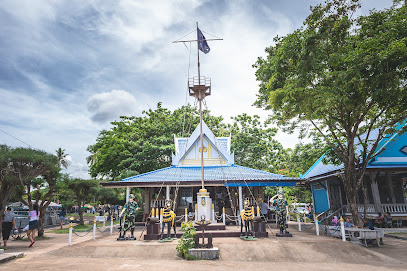
Khao Matsee View Point
Experience stunning panoramic views and serene landscapes at Khao Matsee View Point, a top tourist attraction in Chumphon, Thailand.
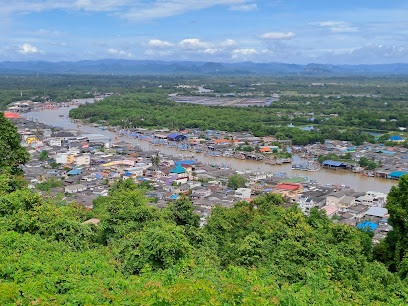
Mu Ko Chumphon National Park
Explore the enchanting Mu Ko Chumphon National Park, a haven for nature lovers with stunning landscapes, vibrant wildlife, and tranquil beaches.
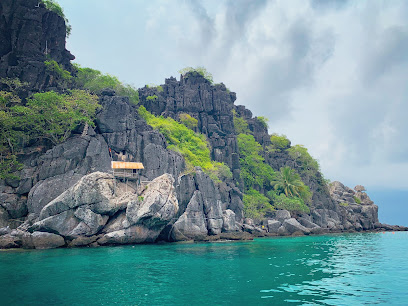
Suspension Bridge - Deer
Discover the breathtaking beauty of the Suspension Bridge in Chumphon, where nature meets adventure in stunning landscapes.
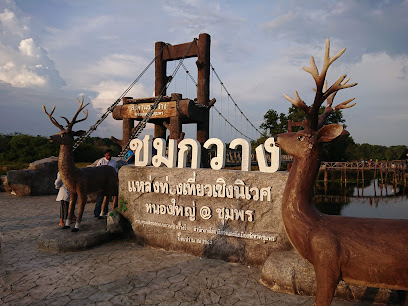
Nong Yai Wooden Bridge
Experience the tranquility and beauty of the Nong Yai Wooden Bridge in Chumphon, Thailand – a picturesque escape for nature lovers and photographers.
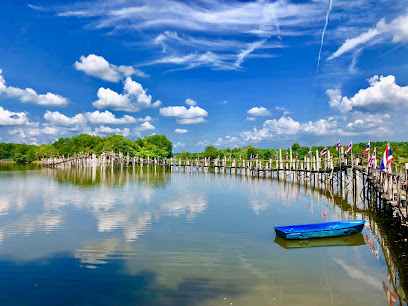
Chumphon Food Market
Discover the flavors of Chumphon at the vibrant Chumphon Food Market, where local delicacies and fresh produce come together in a culinary adventure.
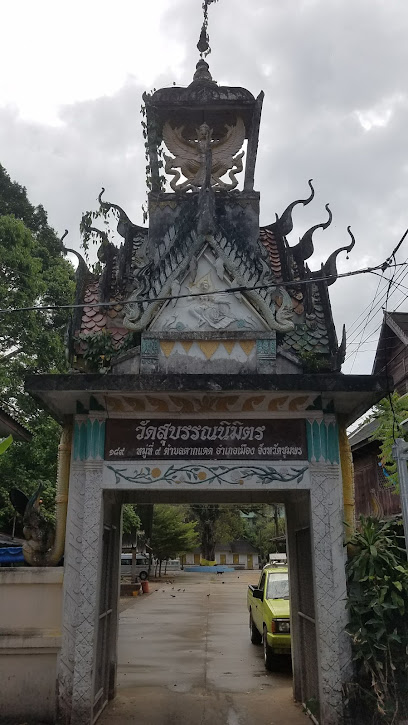
Pak Nam Chumphon Beach
Experience the tranquility and beauty of Pak Nam Chumphon Beach, a serene escape in Chumphon, Thailand, perfect for relaxation and exploration.
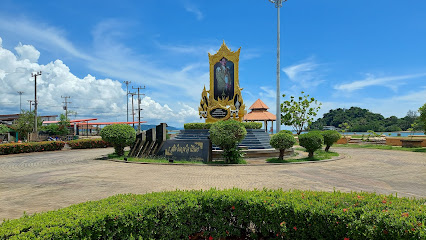
Villa Varich
Experience serenity and comfort at Villa Varich, a charming hotel in Chumphon, Thailand, surrounded by breathtaking natural beauty.

A-Te Chumphon Hotel
Experience the comfort and convenience of A-Te Chumphon Hotel, your ideal base for exploring the beautiful Chumphon province in Thailand.

Chumphon Airport
Discover Chumphon Airport, your gateway to Thailand's stunning beaches, vibrant culture, and unforgettable adventures in the Gulf of Thailand.
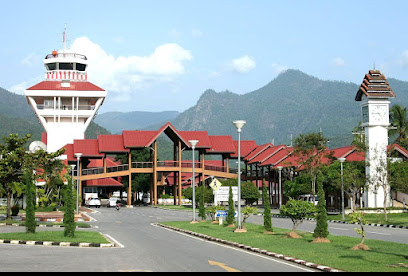
Sairee Beach, Chumphon
Discover the beauty of Sairee Beach in Chumphon, Thailand—your ultimate destination for relaxation, adventure, and stunning sunsets.
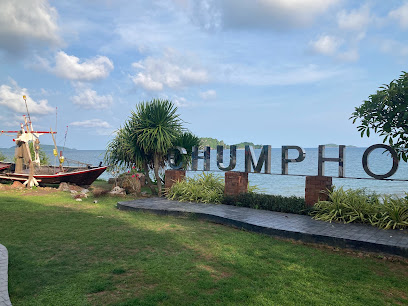
Chumphon Railway Station
Experience the charm of Chumphon Railway Station, a vibrant hub connecting travelers to Thailand's stunning southern coast and rich local culture.

Chumphon Night Market (Night Bazzar)
Discover the vibrant culinary scene at Chumphon Night Market, where local flavors and cultural experiences come together in a festive atmosphere.
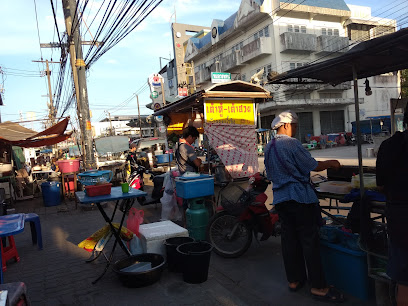
Pharadonphap Beach
Experience the tranquil beauty of Pharadonphap Beach, a serene escape in Mueang Chumphon District, where relaxation meets adventure.
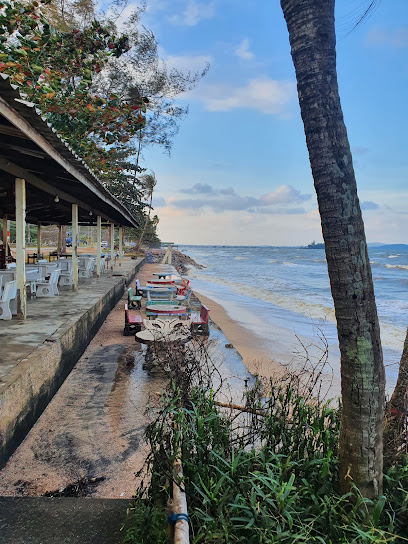
Wat Tham Pong Pang
Explore the tranquil beauty of Wat Tham Pong Pang, a serene Buddhist temple in Chumphon, Thailand, perfect for cultural immersion and spiritual reflection.
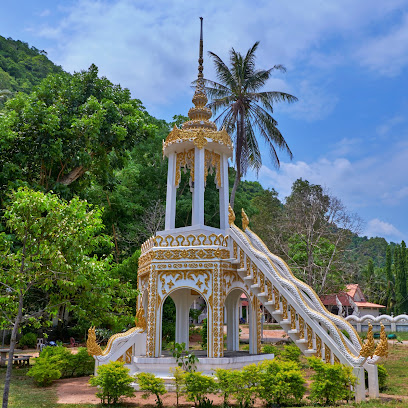
Unmissable attractions to see
Krom Luang Chumphon Khet Udomsak Shrine
Explore the spiritual beauty of Krom Luang Chumphon Khet Udomsak Shrine, a captivating monument blending culture and coastal charm in Chumphon, Thailand.
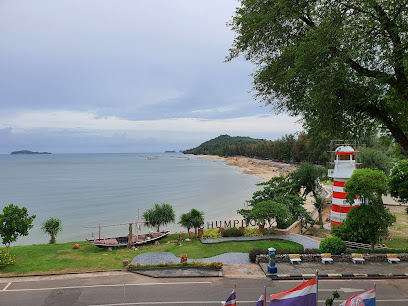
Khao Matsee View Point
Discover the stunning beauty of Khao Matsee View Point in Chumphon, Thailand, where breathtaking views of mountains, beaches, and rivers await.
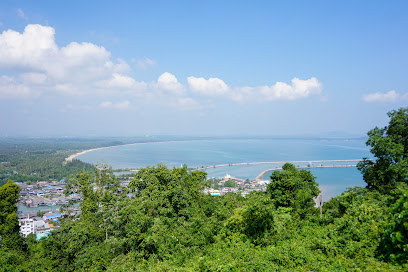
Mu Ko Chumphon National Park
Experience the enchanting landscapes of Mu Ko Chumphon National Park, a paradise of islands, beaches, and vibrant wildlife in Thailand.
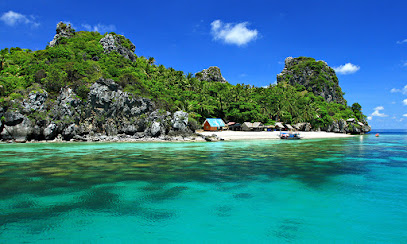
Suspension Bridge - Deer
Discover the breathtaking views and natural beauty of Chumphon at the iconic Suspension Bridge, a must-visit tourist attraction in Thailand.
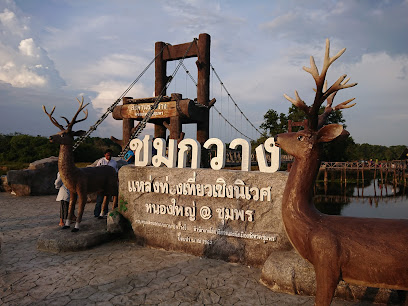
Nong Yai Wooden Bridge
Discover the serene beauty of Nong Yai Wooden Bridge in Chumphon, Thailand, a perfect blend of nature, culture, and picturesque landscapes.
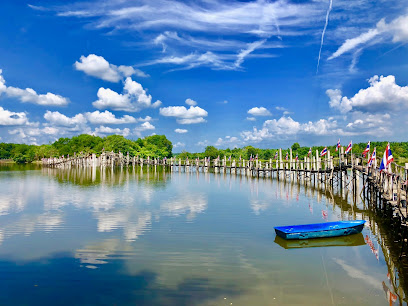
Pak Nam Chumphon Beach
Experience the pristine beauty and local charm of Pak Nam Chumphon Beach, a serene escape in Thailand's coastal paradise.
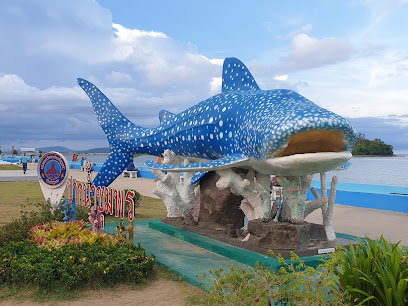
Pak Hat Beach
Experience the tranquility and natural beauty of Pak Hat Beach in Chumphon, Thailand; a hidden gem perfect for relaxation and adventure.
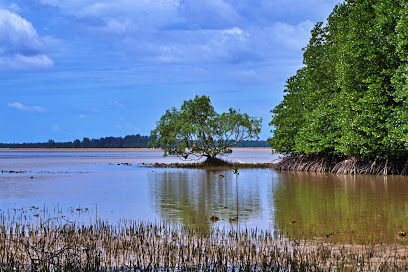
Namtok Kapo Forest Park
Explore the stunning waterfalls and lush landscapes of Namtok Kapo Forest Park, a tranquil national park in Chumphon, Thailand, perfect for nature lovers and adventure seekers.
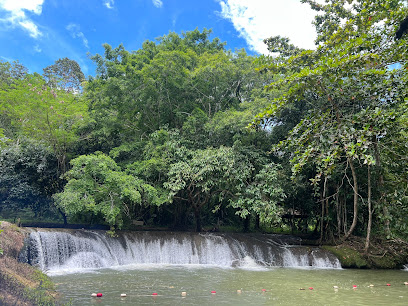
Laem Hua Mong-Kho Kwang Viewpoint
Discover the breathtaking views at Laem Hua Mong-Kho Kwang Viewpoint, a scenic gem in Chumphon, Thailand's picturesque coastline.
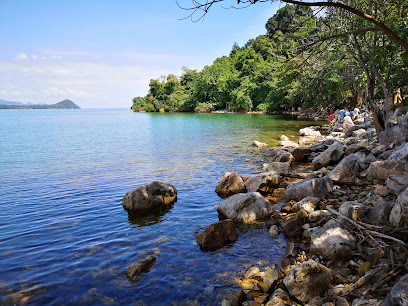
Pharadonphap Beach
Experience the untouched beauty of Pharadonphap Beach in Chumphon, Thailand, where tranquility meets stunning natural landscapes.
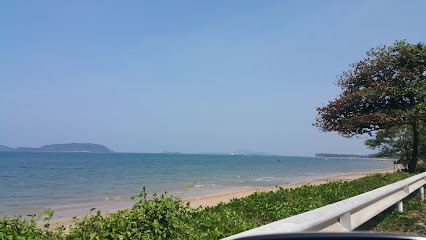
Wat Tham Pong Pang
Experience the serene beauty of Wat Tham Pong Pang, a breathtaking Buddhist temple in Chumphon, Thailand, rich in culture and tranquility.
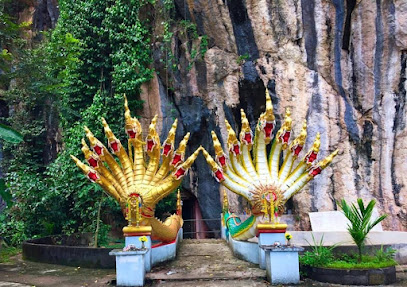
อ่าวครามโฮมสเตย์
Explore the serene beaches, vibrant culture, and adventure-filled activities of Chumphon, Thailand - a coastal paradise waiting for your discovery.
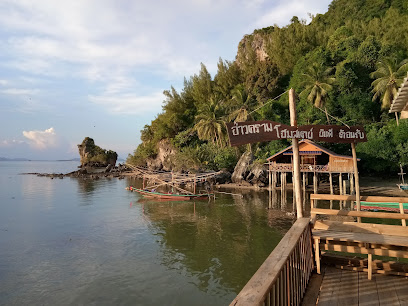
Wat Tham Sing
Experience the serene beauty and rich cultural heritage of Wat Tham Sing, a peaceful Buddhist temple in the heart of Chumphon, Thailand.
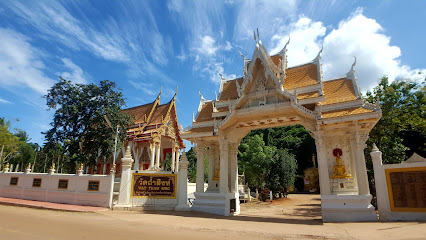
Wat Khao Chedi-Phra Yai
Discover the serene beauty and spiritual significance of Wat Khao Chedi-Phra Yai, a stunning Buddhist temple in Chumphon, Thailand.
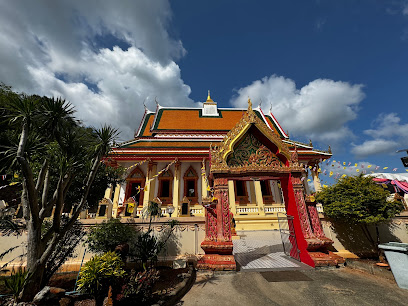
Sai Ree Beach
Explore Sai Ree Beach in Chumphon, Thailand – a serene paradise with golden sands, vibrant local culture, and stunning sunsets.
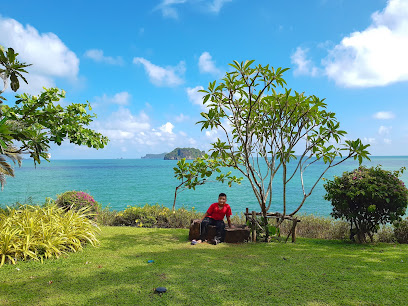
Essential places to dine
Khun Sarai Restaurant
Experience authentic Thai flavors at Khun Sarai Restaurant in Chumphon – where every dish tells a story.
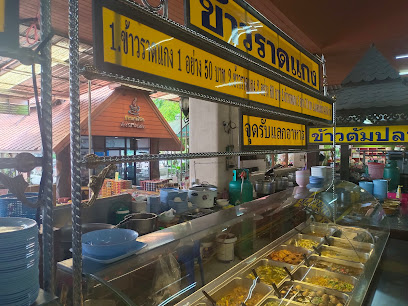
ร้านข้าวต้มหัวปลาฝาแฝด (Twin Fish Hot Pot and Rice Soup)
Experience authentic Thai flavors at Twin Fish Hot Pot and Rice Soup in Chumphon - a delightful culinary gem for every traveler.
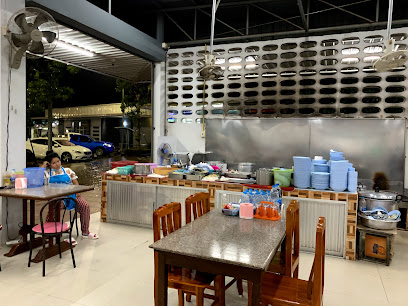
ติ่มซำ หอเจี๊ยะ ชุมพร : Dim Sum Restaurant
Savor authentic dim sum in Chumphon at this beloved restaurant known for its delicious variety and warm hospitality.
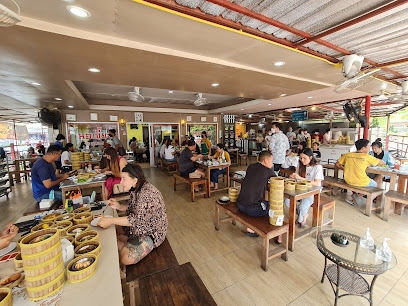
Farida Cha Roti
Discover authentic halal cuisine at Farida Cha Roti in Chumphon; where every dish tells a story of flavor and tradition.
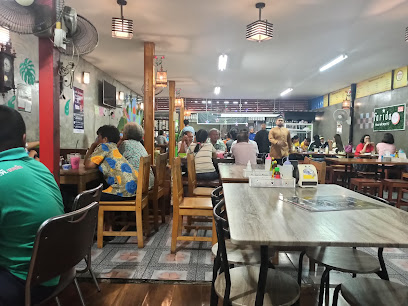
Mae Mai Seafood
Discover Mae Mai Seafood in Chumphon: Fresh catches and authentic flavors await you in this charming Thai seafood haven.
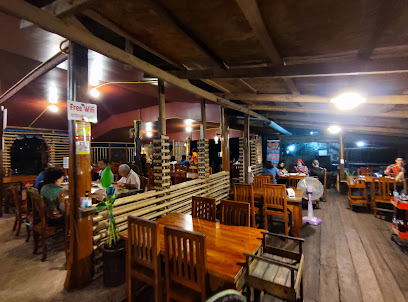
Lui Restaurant
Discover fresh and authentic Thai seafood at Lui Restaurant in Chumphon – where every bite tells a story of coastal flavors.
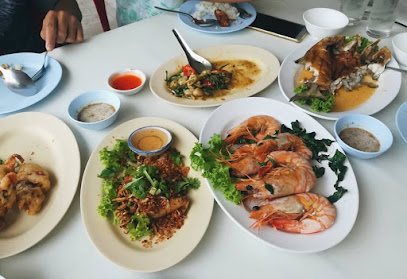
Yai Puad
Discover authentic Thai flavors at Yai Puad in Chumphon - where every dish tells a story of tradition and taste.
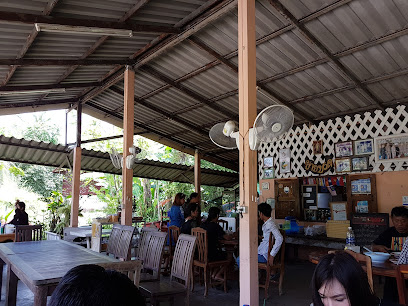
ร้านยิ้มโภชนาซีฟู๊ด ชุมพร
Explore authentic Thai seafood at ร้านยิ้มโภชนาซีฟู๊ด in Chumphon – where fresh flavors meet warm hospitality.
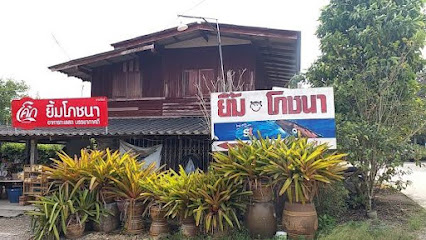
Chokdee Dimsum
Experience authentic Thai dim sum at Chokdee Dimsum in Chumphon - where tradition meets flavor.
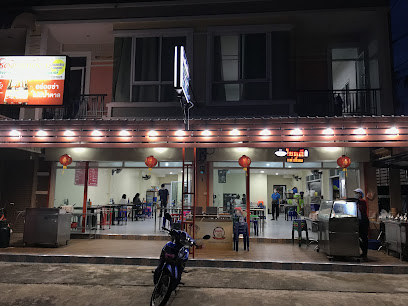
ครัวคุณจักษ์
Savor authentic Thai cuisine at ครัวคุณจักษ์ in Chumphon – where every dish tells a story of flavor and tradition.
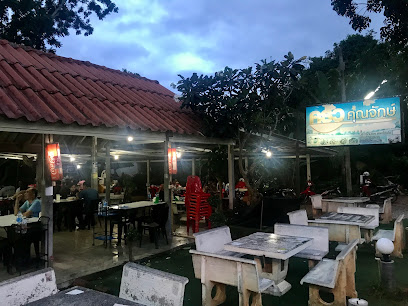
Green Kitchen restaurant
Discover authentic Thai flavors at Green Kitchen Restaurant in Chumphon – where every meal is a celebration of local ingredients and culinary artistry.
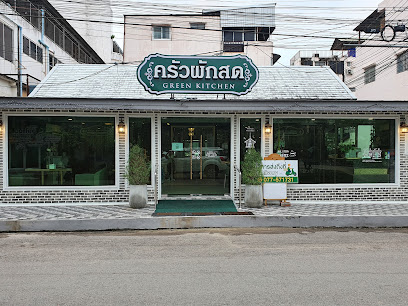
ครัวหนังลุง ชุมพร
Discover the authentic Thai flavors at ครัวหนังลุง ชุมพร - a must-visit restaurant in Chumphon offering delicious local cuisine.

ร้านอาหารหอมเคย สาขาชุมพร - HOM KOEI Southern Thai Cuisine & Cafe
Experience authentic Southern Thai cuisine at Hom Koei in Chumphon - a culinary journey filled with vibrant flavors and warm hospitality.
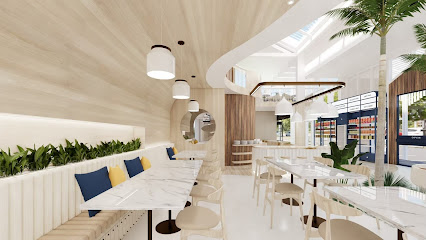
Pharadonphap
Discover Pharadonphap in Chumphon - where fresh seafood meets authentic Thai flavors amidst breathtaking coastal views.
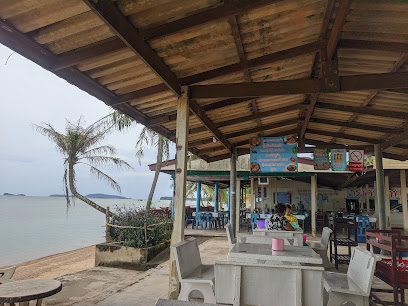
Thien Chai
Discover the authentic flavors of Thailand at Thien Chai in Chumphon – renowned for its delicious noodle soups and warm atmosphere.
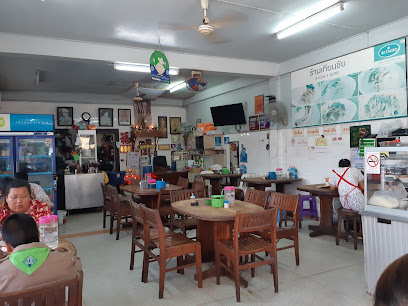
Markets, malls and hidden boutiques
Lotus's Chumphon
Explore Lotus's Chumphon, a vibrant hypermarket showcasing local flavors, international goods, and an exciting shopping experience in the heart of Chumphon.
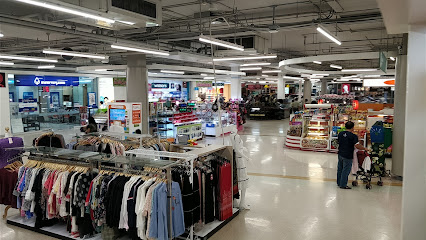
Ocean Shopping Mall
Explore the vibrant Ocean Shopping Mall in Chumphon for an unforgettable shopping and dining experience, blending local culture with modern retail.
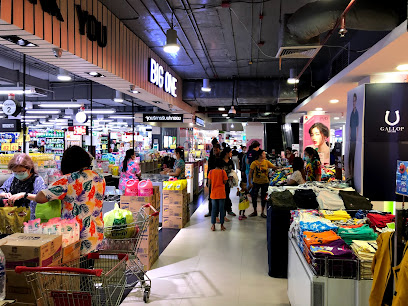
กรีน พาวเวอร์ GREEN POWER CANNABIS & KRATOM CHUMPHON
Explore the finest cannabis and kratom products at Green Power in Chumphon, where quality meets community and education.
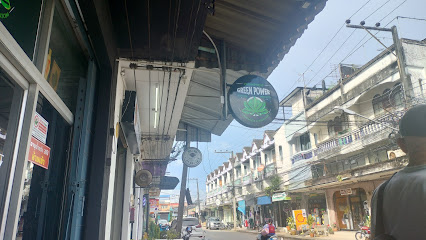
AMBIENT CANNABIS SHOP @ FAMETOUR
Explore the vibrant culture of cannabis at Ambient Cannabis Shop @ FameTour in Chumphon. Discover quality products in a welcoming atmosphere.
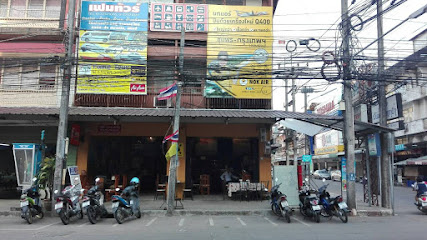
Chumphon Diving Center
Experience the breathtaking underwater world with expert guidance at Chumphon Diving Center, the ultimate diving destination in Thailand.
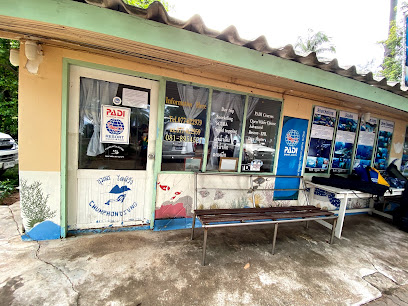
Amway Shop Chumphon
Explore health and beauty at Amway Shop Chumphon, your go-to destination for vitamins, supplements, and cosmetics in the heart of Thailand.
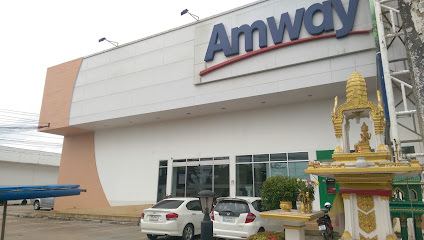
chumphonbike
Explore the breathtaking landscapes of Chumphon, Thailand with Chumphon Bike, your one-stop shop for all cycling needs.
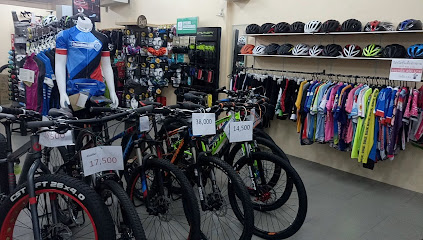
วัตสัน โลตัสส์ ชุมพร : WATSONS LOTUS'S CHUMPORN : Click & Collect
Explore Watsons Lotus's in Chumphon, your ultimate destination for health, beauty, and wellness products in Thailand.
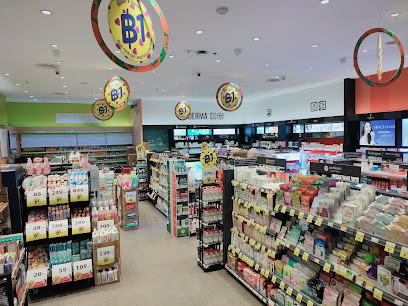
ร้านป้ามุ้ย
Explore unique fashion and authentic Thai culture at ร้านป้ามุ้ย, a charming clothing store in Chumphon's picturesque Hat Phankrai.
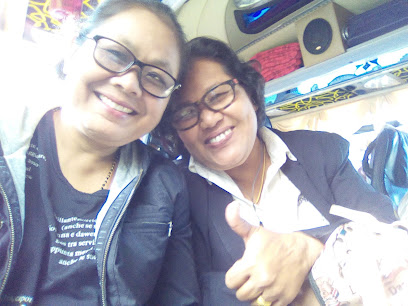
ร้านค้าน้องอั๋น
Discover the Charm of Local Crafts and Authentic Thai Goods at ร้านค้าน้องอั๋น in Tha Sae District, Chumphon.
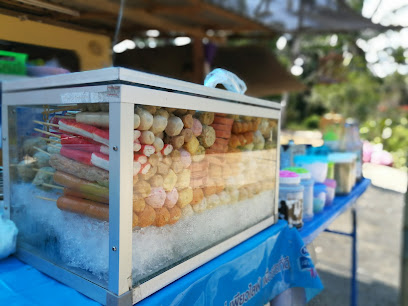
อริสาร้านชำ
Explore the authentic tastes of Thailand at อริสาร้านชำ, your local supermarket in Chumphon, offering fresh produce and unique local delicacies.

Khun Sarai Coffee
Discover the rich flavors of Thai coffee culture at Khun Sarai Coffee, a cozy retreat in Tha Kham, Chumphon.
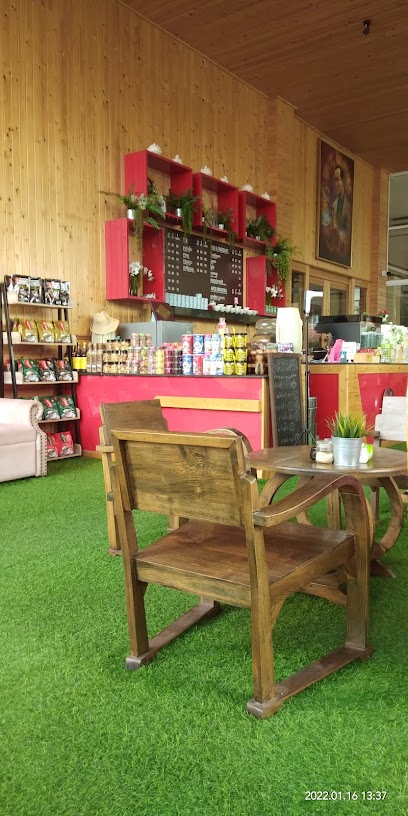
ศุภิสรา มินิมาร์ท
Experience local flavors at Suphisara Minimart in Chumphon, your go-to grocery store for authentic Thai snacks and essentials.
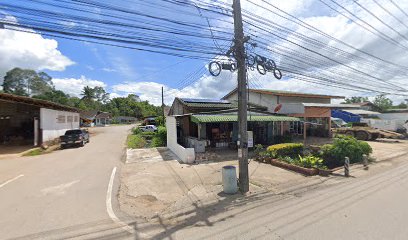
PINK Shop กิ๊ฟช๊อป
Explore the vibrant offerings of PINK Shop กิ๊ฟช๊อป in Chumphon, where unique gifts and local handicrafts await every traveler.
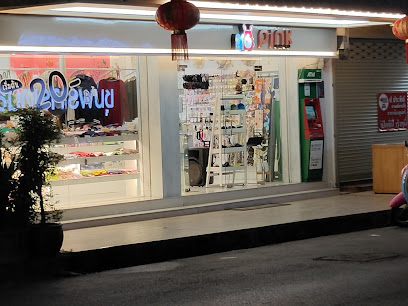
แผงทุเรียนร้านน้องปรายดาว
Experience the taste of Thailand at ร้านน้องปรายดาว, your ultimate destination for fresh durians and local tropical fruits in Chumphon.

Essential bars & hidden hideouts
Maliblues Bed & Dinner
Discover a delightful fusion of dining and lodging at Maliblues Bed & Dinner in Saphli, Chumphon - perfect for culinary enthusiasts and travelers.
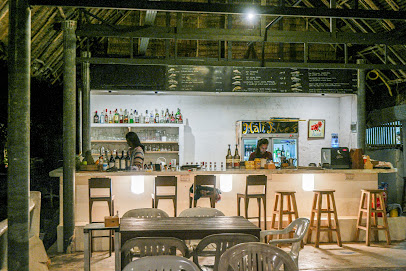
De Rust Bar
Experience the vibrant nightlife at De Rust Bar in Chumphon, where eclectic decor meets a lively atmosphere and a diverse drink selection.
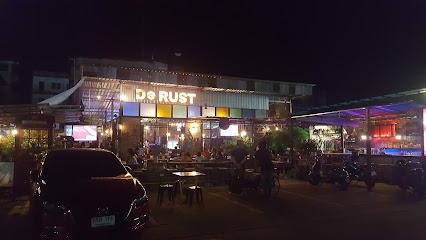
Old Time Cafe
Discover the taste of tradition at Old Time Cafe, a charming bar and restaurant in Chumphon, serving authentic Thai cuisine and delightful drinks.
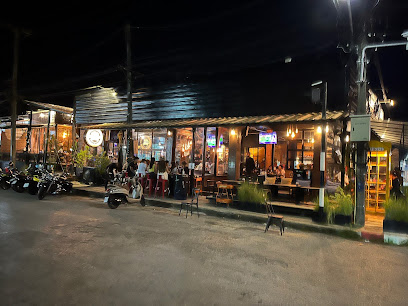
Feirou
Discover the vibrant live music scene at Feirou, a Chumphon bar offering delightful Thai cuisine and a lively atmosphere every night.
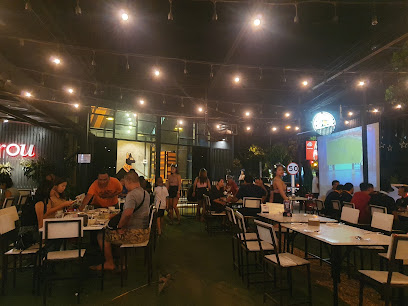
Aeki's Bar & Aeksiam Muaythai
Experience the vibrant flavors of vegetarian cuisine and immerse yourself in Muay Thai culture at Aeki's Bar & Aeksiam Muaythai in Chumphon, Thailand.
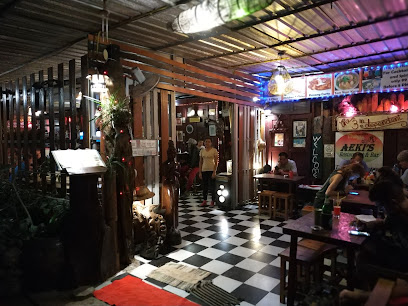
Phoenix Restaurant & Beach Bar
Experience the flavors of Saphli at Phoenix Restaurant & Beach Bar, where delicious food meets stunning ocean views in a vibrant atmosphere.

Bar Horizon
Discover Bar Horizon in Chumphon: A unique hostel and cocktail bar offering adventure, relaxation, and breathtaking views.
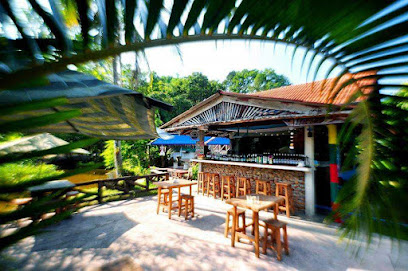
Forest Bar
Experience the perfect blend of relaxation and vibrant nightlife at Forest Bar in Chumphon, where cocktails meet tropical ambiance.
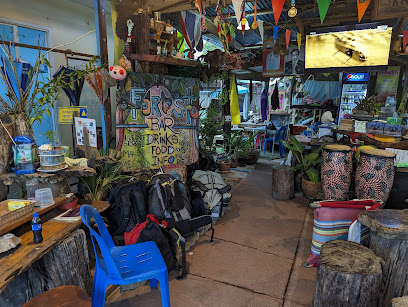
Bar Gu - Chumphon
Experience the lively nightlife at Bar Gu in Chumphon, where delicious drinks and local flavors await you in a vibrant atmosphere.
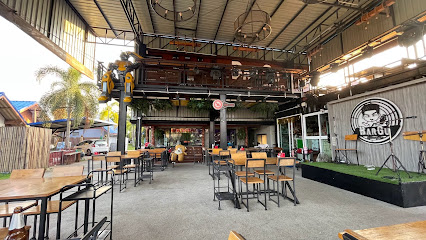
The Curry Shack @ The Crooked Palm
Discover the flavors of Thailand at The Curry Shack @ The Crooked Palm, where every dish is a celebration of local ingredients and culinary artistry.
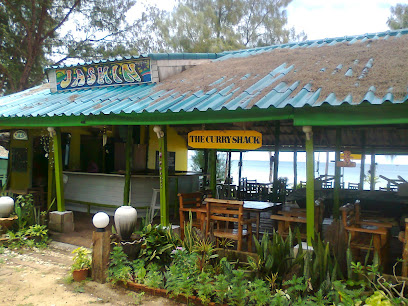
High Five Bar & Bistro
Discover the vibrant nightlife at High Five Bar & Bistro in Chumphon – a perfect blend of great drinks and an inviting atmosphere.
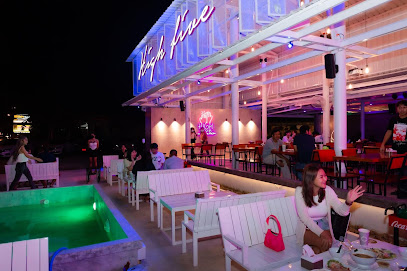
ร้านคิวบ์ CUBE
Experience the vibrant nightlife at CUBE Bar in Chumphon, where great drinks and a lively atmosphere await.

Juice bar garden จู๊ซบาร์การ์เด้น
Discover the refreshing tastes of Juice Bar Garden in Chumphon, where healthy meals and vibrant juices await in a serene garden setting.
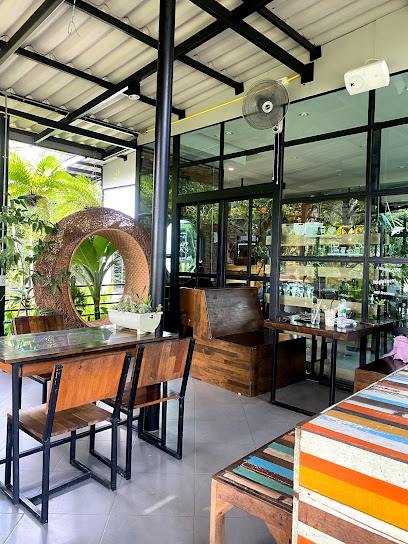
Hops&Malts Craftbeer&Bistro
Explore the finest craft beers at Hops&Malts Craftbeer&Bistro in Chumphon, where flavor meets ambiance in a cozy setting.
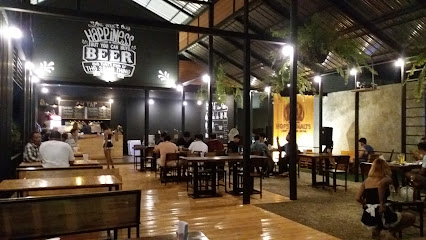
Chumphon Arms Pub
Experience the charm of Chumphon at Chumphon Arms Pub, where local culture meets vibrant nightlife in a cozy setting.
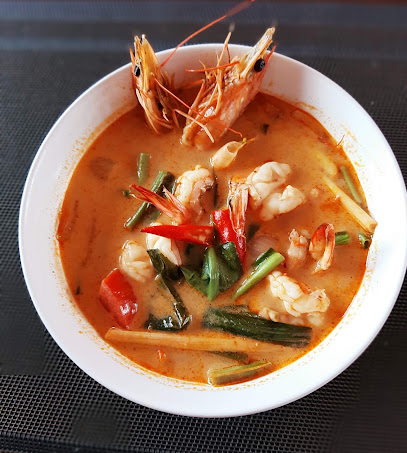
Local Phrases
-
- Helloสวัสดี
[sawasdee] - Goodbyeลาก่อน
[la kon] - Yesใช่
[chai] - Noไม่
[mai] - Please/You're welcomeโปรด/ยินดี
[prode/yindee] - Thank youขอบคุณ
[kob khun] - Excuse me/Sorryขอโทษ
[kor toht] - How are you?สบายดีไหม
[sabai dee mai] - Fine. And you?สบายดีค่ะ คุณล่ะ
[sabai dee ka khun la] - Do you speak English?คุณพูดภาษาอังกฤษได้ไหม
[khun poot paa saa angkrit dai mai] - I don't understandฉันไม่เข้าใจ
[chan mai khao jai]
- Helloสวัสดี
-
- I'd like to see the menu, pleaseขอดูเมนูหน่อย
[kor doo menu noi] - I don't eat meatฉันไม่กินเนื้อ
[chan mai gin neu] - Cheers!ชน
[chon] - I would like to pay, pleaseขอจ่ายเงินหน่อย
[kor jai ngern noi]
- I'd like to see the menu, pleaseขอดูเมนูหน่อย
-
- Help!ช่วยด้วย
[chuai duay] - Go away!ไปทางนั้น
[pai tang nan] - Call the Police!โทรตำรวจ
[toh tam-ruat] - Call a doctor!โทรหมอ
[toh mor] - I'm lostฉันหลงทาง
[chan long tang] - I'm illฉันไม่สบาย
[chan mai sabai]
- Help!ช่วยด้วย
-
- I'd like to buy...ฉันอยากซื้อ...
[chan yak sue...] - I'm just lookingฉันแค่ดูอย่างเดียว
[chan kae doo yang diao] - How much is it?ราคาเท่าไหร่
[ra-ka tao rai] - That's too expensiveแพงไป
[paeng pai] - Can you lower the price?ลดราคาได้ไหม
[lot ra-ka dai mai]
- I'd like to buy...ฉันอยากซื้อ...
-
- What time is it?กี่โมงแล้ว
[gi mong laeo] - It's one o'clockเป็นโมงแล้ว
[pen mong laeo] - Half past (10)ขาบโมง (10)
[khab mong sip] - Morningเช้า
[chao] - Afternoonบ่าย
[bai] - Eveningเย็น
[yen] - Yesterdayเมื่อวาน
[meua wan] - Todayวันนี้
[wan nee] - Tomorrowพรุ่งนี้
[phrung nee] - 1หนึ่ง
[neung] - 2สอง
[song] - 3สาม
[sam] - 4สี่
[see] - 5ห้า
[ha] - 6หก
[hok] - 7เจ็ด
[jet] - 8แปด
[paet] - 9เก้า
[kao] - 10สิบ
[sip]
- What time is it?กี่โมงแล้ว
-
- Where's a/the...?...อยู่ที่ไหน
[... yu tee nai] - What's the address?ที่อยู่คืออะไร
[tee yu keu a rai] - Can you show me (on the map)?แสดงให้ฉันดูได้ไหม
[sa-dang hai chan do dai mai] - When's the next (bus)?รถเมล์ต่อไปเวลาเท่าไหร่
[rot mel tor pai welaa tao rai] - A ticket (to ....)ตั๋ว (ไป ...)
[dtua (bpai ...)]
- Where's a/the...?...อยู่ที่ไหน
History of Chumphon
-
Chumphon, located in the southern part of Thailand, has a history that dates back to the prehistoric era. Archaeological findings suggest that the region was inhabited by early human settlements. Artifacts such as pottery, tools, and remnants of ancient dwellings provide evidence of a thriving community. The strategic location along the Gulf of Thailand made it an ideal spot for trade and agriculture.
-
During the 7th to 13th centuries, Chumphon was under the influence of the Srivijaya Empire, a powerful maritime kingdom based in Sumatra. The Srivijaya Empire dominated the trade routes in Southeast Asia, and Chumphon served as a significant port and trading hub. The region saw an influx of goods, cultures, and religious ideas, particularly Buddhism, which left a lasting impact on the local culture.
-
In the 14th century, Chumphon became part of the Ayutthaya Kingdom. The city grew in importance as a defensive outpost against Burmese invasions and as a center for maritime trade. The Ayutthaya period saw the construction of fortifications and the establishment of administrative structures that laid the foundation for Chumphon's modern development.
-
Chumphon played a crucial role during the Burmese-Siamese wars in the late 18th century. The city was a strategic point for the Siamese forces to launch counter-attacks against the invading Burmese armies. The local population participated actively in the defense efforts, showcasing their resilience and determination. Several monuments and historical sites in Chumphon commemorate this period of conflict and heroism.
-
Under the reign of King Chulalongkorn (Rama V) in the late 19th and early 20th centuries, Chumphon experienced significant modernization. The king's reforms included the development of infrastructure, such as roads and railways, which connected Chumphon to other parts of Thailand. These changes facilitated economic growth and integration into the broader national framework.
-
During World War II, Chumphon was occupied by Japanese forces as part of their broader campaign in Southeast Asia. The city became a strategic military base, and local resources were commandeered to support the war effort. The period of occupation left a deep impact on the local population, influencing post-war recovery and development.
-
In recent decades, Chumphon has evolved into a vibrant city that balances its rich historical heritage with modern development. The local economy thrives on agriculture, fishing, and tourism. Cultural festivals, historical landmarks, and natural attractions draw visitors from around the world, making Chumphon a unique destination that offers a glimpse into Thailand's past and present.
Chumphon Essentials
-
Chumphon is located in southern Thailand and is accessible by various means of transportation. The closest airport is Chumphon Airport (CJM), which has domestic flights primarily connecting from Bangkok. You can also reach Chumphon by train; it is a major stop on the southern line from Bangkok, with the journey taking around 8 hours. Alternatively, buses from Bangkok’s Southern Bus Terminal offer a more affordable option, taking approximately 7-8 hours. For those traveling by car, the drive from Bangkok takes about 6-7 hours via Highway 4.
-
Once in Chumphon, getting around is relatively straightforward. Songthaews (shared pick-up trucks) are a popular mode of local transport and can take you to most destinations within the city and surrounding areas. Motorbike taxis and tuk-tuks are also available for shorter trips. For more freedom, consider renting a motorbike or a car; many rental agencies are located near the train station and in the city center. Public buses and minibuses connect Chumphon with nearby towns and coastal areas, including popular beach destinations.
-
The official currency in Thailand is the Thai Baht (THB). Credit cards are widely accepted in larger hotels, restaurants, and shops, but it's advisable to carry cash for smaller establishments and local markets. ATMs are plentiful in Chumphon, and many accept international cards. Currency exchange services are also available at banks and some hotels. Always have some small denominations handy for convenience.
-
Chumphon is generally considered safe for tourists, but it's important to remain vigilant. Petty crimes like pickpocketing and bag snatching can occur, especially in crowded areas such as markets and bus stations. Avoid walking alone late at night in unfamiliar areas. Stay cautious when using ATMs and keep your belongings secure. Some neighborhoods on the outskirts of the city have higher crime rates, so it’s best to stick to well-populated and well-lit areas.
-
In case of an emergency, dial 191 for police assistance or 1669 for medical emergencies. Chumphon Hospital is the main medical facility and offers comprehensive services. Pharmacies are available throughout the city for minor health issues. It's recommended to have travel insurance that covers medical emergencies. For lost or stolen items, report to the nearest police station. Keep a list of emergency contacts and your embassy’s contact information handy.
-
Fashion: Do dress modestly, especially when visiting temples. Avoid wearing overly revealing clothing. Religion: Do show respect at religious sites by removing your shoes and covering your shoulders and knees. Public Transport: Do be respectful and give up your seat to elderly passengers. Don’t eat or drink on public transport. Greetings: Do greet people with a 'wai' (a slight bow with hands pressed together). Eating & Drinking: Do try local dishes and street food, but use your right hand to eat and pass food. Don’t leave food on your plate, as it is considered wasteful.
-
To experience Chumphon like a local, visit the morning markets where fresh produce and local delicacies are sold. Engage with locals, who are often friendly and willing to share insights about their culture and way of life. Don’t miss visiting the Chumphon National Museum to learn about the region’s history. For a unique experience, take a boat trip to nearby islands like Koh Tao for snorkeling or diving. Explore the lesser-known beaches such as Thung Wua Laen Beach for a more relaxed and authentic experience.
Trending Landmark in Chumphon
-
Krom Luang Chumphon Khet Udomsak Shrine
-
Khao Matsee View Point
-
Mu Ko Chumphon National Park
-
Suspension Bridge - Deer
-
Nong Yai Wooden Bridge
-
Chumphon Food Market
-
Pak Nam Chumphon Beach
-
Villa Varich
-
A-Te Chumphon Hotel
-
Chumphon Airport
-
Sairee Beach, Chumphon
-
Chumphon Railway Station
-
Chumphon Night Market (Night Bazzar)
-
Pharadonphap Beach
-
Wat Tham Pong Pang
Nearby Cities to Chumphon
-
Things To Do in Ranong
-
Things To Do in Koh Samui
-
Things To Do in Surat Thani
-
Things To Do in Hua Hin
-
Things To Do in Nakhon Si Thammarat
-
Things To Do in Krabi
-
Things To Do in Phuket
-
Things To Do in Pattaya
-
Things To Do in Rayong
-
Things To Do in Trang
-
Things To Do in Samut Prakan
-
Things To Do in Bangkok
-
Things To Do in Kanchanaburi
-
Things To Do in Trat
-
Things To Do in Koh Kong










